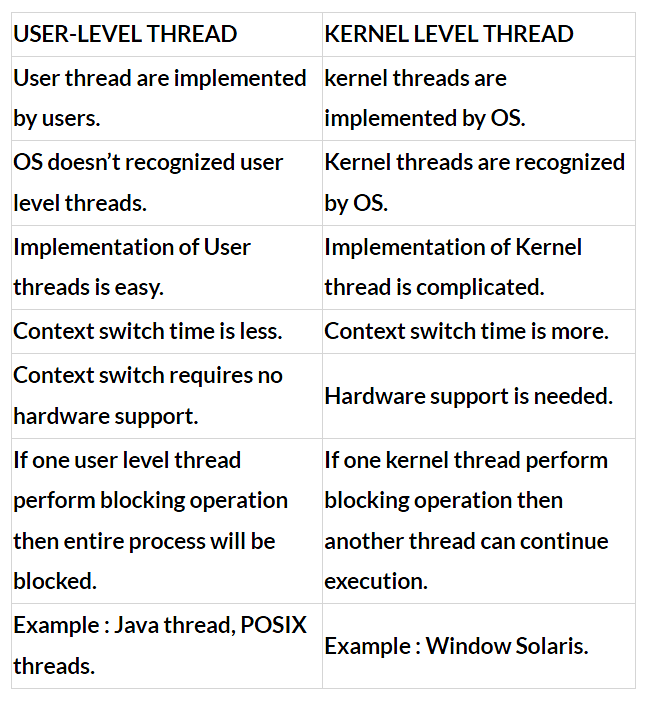Threads | Operating System - Computer Science Engineering (CSE) PDF Download
| Table of contents |

|
| What is Thread in Operating Systems? |

|
| Why Do We Need Thread? |

|
| Components of Threads |

|
| Types of Thread in Operating System |

|
| User Level thread Vs Kernel Level thread |

|
| Multi threading models |

|
A thread is a single sequence stream within a process. Threads are also called lightweight processes as they possess some of the properties of processes. Each thread belongs to exactly one process. In an operating system that supports multithreading, the process can consist of many threads. But threads can be effective only if the CPU is more than 1 otherwise two threads have to context switch for that single CPU.
What is Thread in Operating Systems?
In a process, a thread refers to a single sequential activity being executed. these activities are also known as thread of execution or thread control. Now, any operating system process can execute a thread. we can say, that a process can have multiple threads.
Why Do We Need Thread?
- Threads run in parallel improving the application performance. Each such thread has its own CPU state and stack, but they share the address space of the process and the environment.
- Threads can share common data so they do not need to use inter-process communication. Like the processes, threads also have states like ready, executing, blocked, etc.
- Priority can be assigned to the threads just like the process, and the highest priority thread is scheduled first.
- Each thread has its own Thread Control Block (TCB). Like the process, a context switch occurs for the thread, and register contents are saved in (TCB). As threads share the same address space and resources, synchronization is also required for the various activities of the thread.
Components of Threads
These are the basic components of the Operating System.
- Stack Space
- Register Set
- Program Counter
Types of Thread in Operating System
Threads are of two types. These are described below.
- User Level Thread
- Kernel Level Thread
User Level thread Vs Kernel Level thread

Multi threading models
Many operating systems support kernel thread and user thread in a combined way. Example of such system is Solaris. Multi threading model are of three types.
Many to many model.
Many to one model.
one to one model.
Many to Many Model
In this model, we have multiple user threads multiplex to same or lesser number of kernel level threads. Number of kernel level threads are specific to the machine, advantage of this model is if a user thread is blocked we can schedule others user thread to other kernel thread. Thus, System doesn’t block if a particular thread is blocked.
Many to One Model
In this model, we have multiple user threads mapped to one kernel thread. In this model when a user thread makes a blocking system call entire process blocks. As we have only one kernel thread and only one user thread can access kernel at a time, so multiple threads are not able access multiprocessor at the same time.
One to One Model
In this model, one to one relationship between kernel and user thread. In this model multiple thread can run on multiple processor. Problem with this model is that creating a user thread requires the corresponding kernel thread.
|
10 videos|144 docs|33 tests
|
FAQs on Threads - Operating System - Computer Science Engineering (CSE)
| 1. What is a thread in operating systems? |  |
| 2. Why do we need threads in operating systems? |  |
| 3. What are the components of a thread? |  |
| 4. What are the types of threads in an operating system? |  |
| 5. What is the difference between user-level threads and kernel-level threads? |  |





















